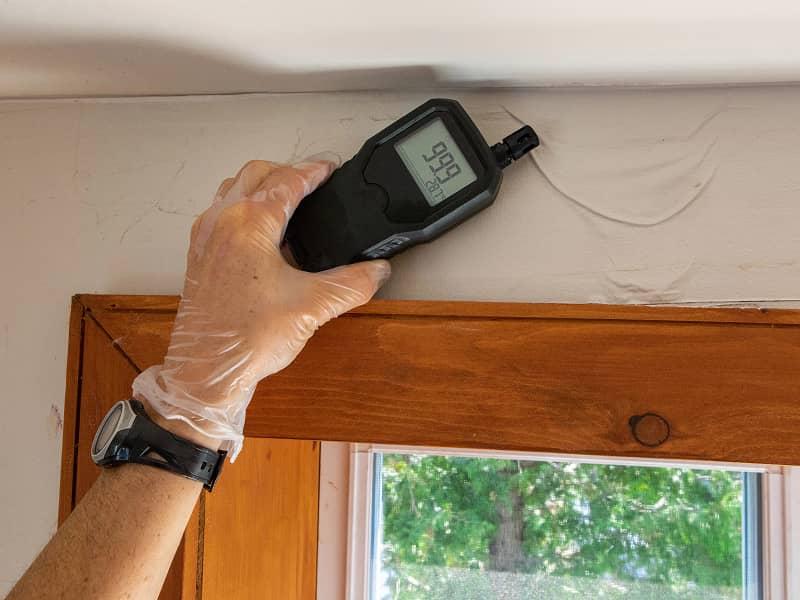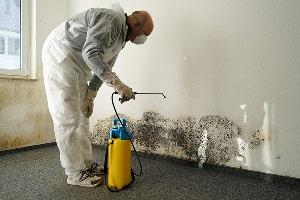TL;DR
Water leaks don’t just make a mess. They open the door to mold and mildew that can quietly destroy your home and health. Fast action matters. This guide explains how to spot trouble and clean up properly. It also shows how the Heiston Group can help you stop microbial growth before it becomes a major issue.
A simple leak can spiral into a toxic mold problem if not handled quickly. Wet carpets, damp drywall, and hidden moisture set the perfect stage for microbial invasion in just days.
Health issues, structural damage, and high costs often follow slow responses. Knowing how to act fast—and when to call in pros—can make all the difference in protecting your home and well-being.
Why Mold & Mildew Love A Good Leak
Moisture, darkness, and warmth create mold’s dream habitat. A water leak offers all three. These organisms don’t wait for an invitation. They settle in quickly and grow silently behind walls.
If you don’t address the source swiftly, spores can colonize floors, ceilings, and insulation. This quiet spread creates long-term damage that’s costly and difficult to reverse without professional help.
Here’s why water leaks trigger mold and mildew:
- They deliver steady moisture: Even a minor drip gives mold the hydration it needs.
- They’re often hidden: Leaks inside walls or beneath floors go undetected for days or weeks.
- They affect porous materials: Mold thrives on drywall, insulation, carpets, and wood.
- They reduce air circulation: Moist areas behind walls or under furniture trap stagnant air.
- They delay discovery: Slow leaks may not trigger alarms, allowing spores to spread uninterrupted.
Together, these conditions form an ideal storm for mold to flourish quietly, quickly, and dangerously.
Key Signs Of Mold Or Mildew After A Leak
Not all mold starts as a green patch on the wall. Some signs are subtle but no less serious. Trust your nose and eyes—they often catch the problem first.
The earlier you spot these clues, the better your chances of stopping damage in its tracks. Knowing what to look for can help you take action before things spiral.
Early Warning Signs | What They Might Mean |
Musty odors. | Mold spores are in the air. |
Peeling or bubbling paint. | Moisture is trapped in the wall. |
Warped floors. | Water has soaked the subflooring. |
Stained ceilings/walls. | Water traveled beyond the leak. |
Persistent coughing/sneezing. | Airborne mold exposure. |
Acting quickly after a leak is critical. These steps help reduce risk, but professional help ensures thorough drying and safety. This is especially true when moisture hides where you can’t see or reach.
Immediate Steps To Take After A Water Leak
The hours after a leak are critical. Act quickly, and you may avoid long-term mold issues. If you miss that window, the cleanup can become costly and complex.
Following these steps helps prevent spores from settling. But if conditions aren’t ideal or you cannot find, it’s time to bring in the pros to finish the job.
1. Stop The Leak
- Turn off the water supply if possible.
- Patch visible damage temporarily.
- Call a plumber for repairs.
2. Remove Standing Water
- Use a wet/dry vacuum or mop up.
- Place towels or absorbent cloths in smaller areas.
3. Dry Everything Out
- Open windows and doors for airflow.
- Use dehumidifiers and fans.
- Pull up carpets or rugs to dry underneath.
4. Remove Wet Items
- Take out furniture, curtains, and other soft goods.
- Dry them thoroughly outside if salvageable.
- Dispose of anything too soaked to save.
5. Clean & Disinfect
- Scrub all affected hard surfaces with a mold-killing solution (bleach mix or commercial cleaners).
- Don’t forget corners and hidden spaces.
Acting quickly after a leak is critical. These steps help reduce risk, but professional help ensures thorough drying and safety, especially when moisture hides where you can’t see or reach.
How We At Heiston Group Solve It Fast
When water damage happens, speed and skill matter. At Heiston Group in Arlington VA, Northern Virginia, we know what mold does and where it hides. We can handle both the visible and invisible threats.
We bring tools that homeowners don’t have, and the know-how to use them right. Our crew identifies the full extent of damage and eliminates it safely and permanently. Here’s how we solve the problem:
- Moisture Mapping: We use infrared tools to detect where water traveled, even behind walls or under flooring.
- Containment Setup: If mold is present, we isolate the area to stop the spread.
- Air Scrubbing: Our machines clean the air to remove spores.
- Material Removal: We cut out contaminated drywall, insulation, and other building materials.
- Sanitization: We apply EPA-registered antimicrobial agents to kill remaining spores.
- Restoration: Once clean, we rebuild the damaged area so it’s like new—or better.
We’re not just in the business of cleanup. We’re in the business of peace of mind. When water damage threatens your home, we show up with answers.
How To Prevent Mold & Mildew Going Forward
Once your home is dry and clean, your next step is to stay ahead of future leaks. Mold prevention means thinking ahead, managing moisture, and acting fast when something feels off.
Our team can help you build a defense plan—from checking crawlspaces to suggesting moisture-resistant materials. Staying proactive keeps mold from making another appearance.
Ongoing Tips
- Install a dehumidifier in damp areas like basements.
- Keep ventilation fans running in bathrooms and kitchens.
- Fix small leaks fast—even the “harmless” ones.
- Monitor humidity levels (aim for under 50% indoors).
- Inspect the attic and crawl spaces regularly.
- Use mold-resistant drywall or paint in vulnerable areas.
Know When To Schedule A Pro Inspection
You don’t need visible mold to justify a check-up. If you’ve had water damage, even minor, it’s worth letting us take a look.
- After roof or plumbing repairs.
- If a space still smells musty after drying.
- Before selling or remodeling.
- After a basement flood or HVAC leak.
- When humidity levels spike for days.
We’ll spot what’s hiding, confirm if things are safe, and stop issues before they spiral.
The Long-Term Cost Of Ignoring Mold
Mold isn’t just a one-time nuisance. It’s a recurring cost if not handled properly. Ignoring it may seem cheaper at first, but over time, it becomes the most expensive choice. Here’s what can happen if mold is left untreated:
- Recurring repairs: Mold returns fast if you don’t fix the root cause. You’ll pay again and again.
- Structural degradation: It eats through drywall, studs, subflooring, and insulation, compromising the integrity of your home.
- Lowered property value: Mold scares off buyers. Even past infestations flagged during inspections can slash offers.
- Insurance complications: Many policies exclude damage due to delayed response. That leaves you footing the bill.
- HVAC contamination: Mold spores can travel through vents, spreading throughout your house and into your lungs.
- Chronic health symptoms: Respiratory problems, fatigue, and skin issues can linger or worsen over time.
Mold doesn’t just go away. Ignoring it leads to creeping expenses, both financial and personal. What seems minor today often becomes a repeating nightmare down the line.
Quick fixes don’t cut it. Addressing mold at its source is the only real way to avoid these long-term consequences.
Real Talk: Mold Isn’t A DIY Job After 48 Hours
After two days, you’re not dealing with surface-level mold. You’re dealing with colonization, and that needs professionals who have the tools and training to eliminate it.
Here’s why going DIY at that point is a risky move:
- Spores go deep: Mold doesn’t stay on the surface. It roots into porous materials like drywall and wood.
- Household cleaners don’t reach: Bleach might remove stains, but it doesn’t kill spores hidden inside walls.
- You’ll likely miss hidden moisture: Without thermal cameras or moisture meters, you can’t trace the full spread.
- Disturbing mold can spread it: Scrubbing or sanding releases spores into the air if not properly contained.
- Lack of containment = new colonies: DIYers often skip air barriers and HEPA filters, leading to fresh outbreaks elsewhere.
- You risk your health: Even short-term exposure during cleaning can trigger asthma, allergic reactions, or worse.
Unless you act fast, catch the leak early, and fully dry within 24 hours, it’s smarter—and safer—to let professionals handle it.
Why Fast Response Makes All The Difference
Delays cost more than money—they risk health and long-term property value. Each hour gives mold more ground to cover, more air to fill, and more structure to weaken.
Time After Leak | What Might Happen |
0–24 hours | Water spreads, soft goods soak |
24–48 hours | Mold starts forming |
2–7 days | Mold colonizes porous surfaces |
1+ week | Structural damage possible |
2+ weeks | Air quality suffers drastically |
We act fast because we’ve seen what happens when people wait. Letting us intervene early means you save time, protect your home, and sleep easier.
Acting Quickly Is The Key
Mold and mildew are more than a bad smell or a nasty stain. These are warning signs of bigger problems that demand fast, expert attention.
Don’t let a small leak turn into a major renovation. If something feels off or smells worse, give us a call. We’re ready when you are—and we won’t leave you guessing.




